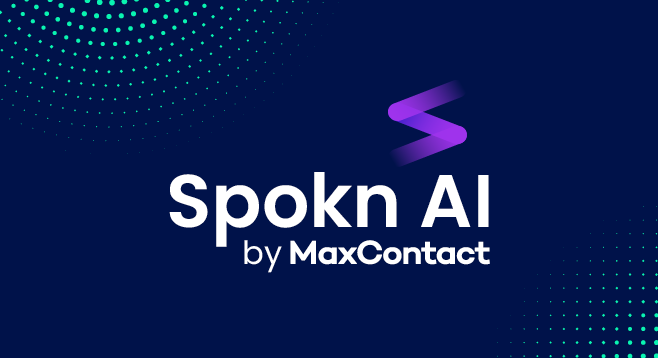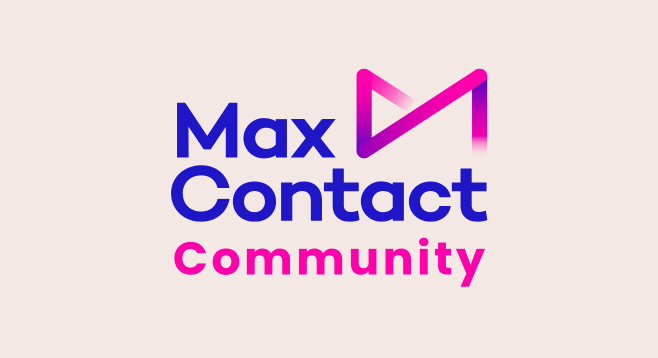Contents
Introduction
The competitive nature of contact centres means that achieving exceptional customer service and keeping costs under control is a balancing act. Traditional landlines aren’t an option, and some contact centres opt for Voice over Internet Protocol (VoIP) as a cost-effective and flexible solution to ensure effective communication with customers.
This guide explores the inner workings of VoIP, how it exists in call centre operations, and its potential limitations. We’ll also talk about UCaaS and CCaaS – and discuss how it could be a more efficient and customer-centric solution for omni-channel contact centres. And if you’re a BPO contact centre? We’ll explain why neither VoIP or UCaaS is the right solution for your contact centre model (and what is).
How do VoIP calls work?
Voice over Internet Protocol (VoIP) has become a well-established technology for making and receiving phone calls over an internet connection instead of traditional landlines. VoIP technology has been around for years and is still used by some call centres seeking cost-effective solutions.
Here’s a breakdown of how VoIP calls work:
1. From Voice to Data: When you speak into your microphone, analogue sound waves are converted into digital data. This process is called analogue-to-digital conversion.
2. Compression Efficiency: The digital data is compressed to significantly reduce its size, which optimises internet transmission speed.
3. Packets for Travel: The compressed data is broken down into smaller packets, a bit like sending a large file in multiple parts. These packets are individually addressed and routed over the internet using the IP protocol.
4. Reassembly and Playback: At the receiving end, the packets are reassembled and converted back into digital data. This data is then transformed into analogue sound waves through a digital-to-analogue converter. This allows you to hear the caller’s voice through your speaker.
How is VoIP used in contact centres?
There are some reasons why call centres may choose to use VoIP, and its use cases extend beyond simply making and receiving calls.
- It can handle inbound customer service
VoIP supports high-volume call management in customer service industries. VoIP distributes calls across your call centre agents to reduce wait times.
- It enables flexible remote technical support
VoIP allows contact centres to deliver remote technical support.
Removing geographical limitations also means that call centre teams can handle a wider range of technical support cases without having to visit sites in person.
- Appointment scheduling
Manual appointment scheduling is prone to error, but VoIP allows call agents to schedule appointments during calls. Additionally, VoIP gives customers greater flexibility by enabling them to choose their preferred date, time and even the specific agent they want to speak with. Automating appointment reminders further boosts efficiency by reducing missed appointments and maximising valuable agent time.
The advantages and disadvantages of VoIP
Although VoIP is still used by contact centres with moderate needs, other platforms, such as UCaaS are gaining traction. Therefore, it is important to understand the benefits of VoIP and also be aware of its limitations.
Here are the advantages of VoIP:
- VoIP can save you money
Traditional telephone services often come with inflated long-distance charges and require costly specialised equipment and maintenance investments – particularly if you’re a growing business. By leveraging the internet for calls, VoIP significantly reduces costs. With no bulky phone line installation or complex setups, VoIP doesn’t require extra equipment and you only pay for the lines you need. VoIP services also save you money by offering unlimited long-distance calls and affordable international calls. By ditching the per-minute model, you will benefit from predictable, lower rates.
- It gives you more flexibility
An advantage of VoIP is you can make and receive calls anywhere, regardless of location. Contact centres have the flexibility to grow remote teams, with a stable internet connection and sufficient bandwidth being the only conditions.
- Scale up or scale down
Predicting call volume can be a guessing game, but with VoIP, you’re equipped to deal with changing demands. Scaling up or down is easy as you can add or remove lines in minutes, adapting to seasonal fluctuations or unexpected surges without hefty upfront costs.
Here are the disadvantages of VoIP:
- VoIP relies on a stable internet connection
When you’re reliant on an internet-based phone system, the customer service you provide is only as consistent as your internet connection. Slow internet speeds can lead to poor call quality and dropped calls – which is frustrating for call agents and customers.
- VoIP calls are more likely from network jitter
Poor internet connection, inadequate routers and incorrect cables are all connection issues that can cause latency and jitter. Network jitter happens when data packets hit delays in transmission or don’t get properly reassembled. It leads to choppy and unprofessional audio.
- Limited mobility and device flexibility
While remote capabilities are a VoIP strength – it does come with some caveats. Yes, it minimises traditional phone line infrastructure, but VoIP still requires compatible hardware like VoIP phones and adapters which restricts remote access.
- Power outages can cause disruption
Traditional phone lines function even during power outages, but VoIP systems lose all functionality without connection to the internet. In most cases, WiFi is powered by WiFi routers which rely on electricity to work. So, if your call centre experiences a power outage, your service will suffer. To mitigate the risk of power outages, backup solutions such as generators or mobile hotspots are required.
- VoIP doesn’t encourage collaboration
VoIP is great for voice communication, but its functionality can fall short of modern needs. Features like video conferencing, instant messaging, file sharing and collaborative tools tend to be absent and require integration with separate platforms.
- It can be costly to scale
Scaling your VoIP system for additional features like video conferencing can get tricky. This often requires separate systems, which can impact your budget and introduce complexity.
- Additional security demands
Integrating additional communication channels that go beyond voice increases vulnerability. Adding features to your VoIP software requires robust security measures to protect your system and data.
Is a VoIP system the right choice for your contact centre?
VoIP focuses solely on basic voice calls, so it typically has lower initial costs than feature-heavy platforms. But will you need to expand your communication channels or functionality requirements in the future? While it’s possible to do this, it might require separate platforms alongside VoIP for an additional cost. So, before committing to VoIP, consider if you are comfortable juggling separate systems. Ask yourself, do the potential cost savings outweigh the limitations?
If your contact centre requirements extend beyond voice calls and integrations, analytics and optimisation of processes are on your must-have list, alternative solutions such as UCaaS could be a better fit.
VoIP vs UCaaS: What’s the difference?
Unified Communications as a Service (UCaaS) is a cloud-delivery model that enables a more complex communication platform combining voice calls, video conferencing, instant messaging, file sharing, collaboration tools, and more.
UCaaS is for contact centres that want to upgrade from outdated VoIP systems or need a unified solution across multiple communication channels.
UCaaS can easily integrate into your existing business ecosystem, like CRM systems, streamlining data flow and simplifying operations. UCaaS offers impressive scalability and can adapt well to fluctuating call volumes. By integrating other communication channels, such as voice and chat, UCaaS encourages team collaboration and improved efficiency. Better still, your customers have diverse communication options, leaving them feeling valued and heard.
Here are the main differentiating capabilities and features of VoIP and UCaaS.
| VoIP VS UCaaS | ||
| Feature | VoIP | UCaaS |
| Primary Function | Voice calling only | Unified communication & collaboration across multiple channels (voice, video, chat) |
| Feature Set | Primarily voice calls | Voice, video conferencing, instant messaging, file sharing, collaboration tools |
| Integration | Limited integration with other business applications | Seamless integration with major CRM & productivity platforms |
| Scalability | Requires separate systems for additional features | Scales efficiently up or down with communication needs |
| Mobility | Relies on VoIP-specific apps/phones | Accessible on various devices & web browsers |
| Security | Requires separate security measures for different channels | Centralised security management across all communication tools |
| Cost | Generally lower priced initially | Often requires a bigger investment due to wider feature set |
| Suitability | Businesses with basic voice call needs | Larger contact centres requiring comprehensive communication beyond voice calls |
UCaaS offers more versatility and integration capabilities than VoIP, but we should also acknowledge its limitations when adapting to specific types of contact centres, such as BPOs.
Why is CCaaS more suitable for BPO contact centres?
For BPO contact centres with high call volumes, complex customer interactions and tight margins, even UCaaS lacks the capabilities that are needed. Cloud-based contact centre solutions also known as CCaaS, offer the scalability, cost-effectiveness, agility, omnichannel support and data-driven insights that BPO contact centres require.
CCaaS supports multiple communication channels and gives BPOs access to all the latest features and functionalities without the need for costly upgrades or complex integrations. Outsourced contact centres can use these advancements to stay competitive and offer cutting-edge customer service solutions to their clients.
CCaaS uses a pay-as-you-go subscription model, which is more cost effective for BPOs. What’s more, you only pay for the features and resources used, reducing overall operational costs.
Conclusion
VoIP is an upgrade from traditional landlines but does not offer the functionality required to grow a business, UCaaS offers increased functionality however, for call centres that are looking to grow, increase revenue and meet KPIs, having a CCaaS solution is far more suited to your needs and has the capabilities to grow with your business.
Learn how MaxContact’s contact centre solutions can help you. Book a demo today or get in touch with the team to find out more.





